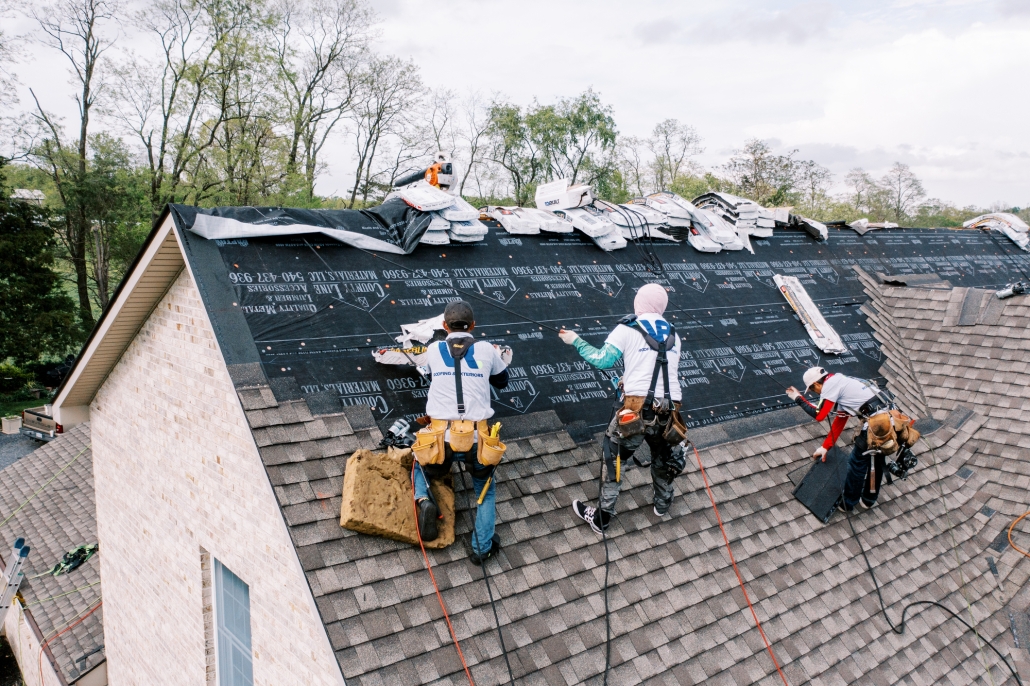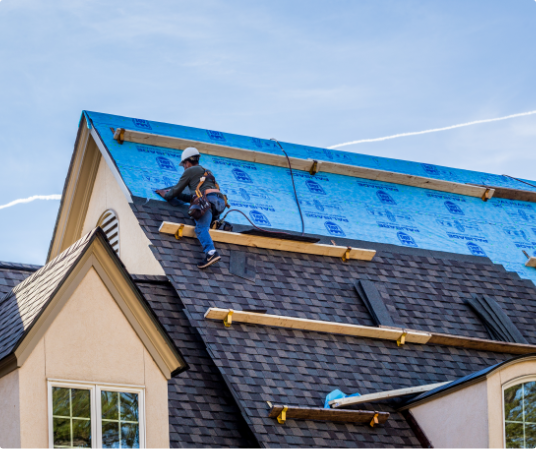Finest Practices for Ensuring Proper Roof Ventilation
A balanced consumption and exhaust vent ratio, frequently 1:300, plays a critical role, with consumption vents preferably placed at the lower edge of the roof covering for great air access and exhaust vents at the height for warm air leave. Maintaining insulation away from vents is critical to stop airflow constraint.
Understand Air Flow Essentials
Appropriately comprehending air flow basics is vital for making sure the durability and effectiveness of roof covering systems. Reliable ventilation alleviates moisture accumulation and temperature level extremes in the attic room, both of which can lead to substantial structural damage gradually. A well-ventilated roofing system assists in protecting against typical issues such as mold growth, wood rot, and ice dams, which can endanger the honesty of the roof covering materials and the underlying structures.
The main objective of ventilation is to facilitate the motion of air, permitting a consistent exchange between the interior and outdoor atmospheres. This balance is accomplished with a combination of intake and exhaust vents that interact to maintain optimum air flow. Intake vents, typically situated along the soffits or eaves, enable fresh air to get in the attic space, while exhaust vents, typically situated at or near the roof covering ridge, enable warm, moist air to leave.
Secret factors affecting the performance of roofing ventilation consist of proper positioning, sufficient sizing, and making certain that both consumption and exhaust vents are unobstructed. Routine inspection and upkeep are critical to recognize possible clogs, damages, or inadequacies in the air flow system, thereby safeguarding the roof's performance and resilience.
Kinds of Roofing Vents
Roofing system vents play a critical role in keeping efficient attic room ventilation and, by extension, the general health and wellness of the roof system. Numerous types of roof covering vents are readily available, each with special advantages customized to specific roof covering requirements.

Soffit vents are installed under the eaves and work in tandem with roofing vents to make certain a balanced intake and exhaust system. By allowing cooler air to enter from below, soffit vents promote the expulsion of hot air through upper vents. Gable vents, situated on the outside walls of the attic, deal one more efficient solution, especially in homes with saddleback roofs.
Analyze Your Present Ventilation

Next, take into consideration the age and problem of your roof covering products and ventilation elements. Older systems might not comply with existing structure codes or might have weakened over time, minimizing their efficiency. Conduct a thorough examination to recognize any indications of deterioration, such as corrosion, site link damage, or gaps that might jeopardize the system's performance.
Furthermore, measure the attic room temperature and moisture levels. High temperature levels and humidity can show insufficient ventilation.
Installation Best Practices
Efficient setup of roof covering ventilation systems is vital for ensuring optimal performance and long life. Proper setup starts with recognizing the specific air flow requirements of the roof and the structure it covers. This involves computing the proper ratio of consumption to wear down vents, generally sticking to the 1:300 policy, which stipulates one square foot of air flow for every 300 square feet of attic floor area.

Intake vents must be set up at the roofing's reduced side, usually in the soffits, to permit awesome air to get in. Exhaust vents, on the other hand, need to be set up near or at the roof covering's optimal to assist in the exit of warm, wet air.
Seal all air vent links thoroughly to avoid air leakages and potential water infiltration. Usage top quality products and follow producer standards to make certain sturdiness and effectiveness. Additionally, incorporating ridge vents with baffles can dramatically enhance air movement efficiency by stopping wind-driven rainfall and snow from going into the attic.
Eventually, accurate installment Discover More of roofing ventilation systems mitigates potential issues such as mold and mildew development, ice dams, and architectural damages, making certain the roof covering's honesty and the building's total health and wellness.
Routine Upkeep Tips
Consistency in maintenance practices is basic to ensuring the long-lasting efficiency of roof covering ventilation systems. Throughout these evaluations, make sure that vents are free of particles, nests, and various other blockages that might impede airflow.
Cleaning up the vents is an additional essential job. Use a soft brush or a vacuum to eliminate dirt and debris from consumption and exhaust vents. Beware not to harm the air vent displays or louvers throughout the procedure. Furthermore, inspect the attic room for any kind of indicators of water damage, which might compromise the integrity of the roof.
Proper insulation is just as vital. Make certain that attic room insulation does not block the vents, as this can badly restrict air movement. If any insulation has actually changed or worked out, rearrange or replace it to maintain an efficient obstacle.
Finally, replace any type of damaged or missing out on parts promptly. Damaged vents, fractured roof shingles, or tatty blinking can all add to insufficient ventilation and should be dealt with right away. Regular upkeep makes sure that the roof air flow system works optimally, thus expanding the life expectancy of the roof covering itself.
Verdict
Making certain proper roofing air flow is extremely important for maintaining the efficiency and toughness of a roof. Adherence to the 1:300 intake and exhaust air vent ratio, paired with the calculated positioning of vents, is necessary. blog Normal biannual assessments, particles cleaning, and guaranteeing insulation does not obstruct airflow are critical techniques. Applying these ideal practices will certainly cultivate a well-ventilated roof, therefore alleviating possible problems associated with moisture buildup and excessive heat, ultimately lengthening the roof covering's lifespan.
A well balanced consumption and exhaust vent proportion, frequently 1:300, plays a critical role, with intake vents ideally placed at the reduced edge of the roof covering for cool air entrance and exhaust vents at the top for cozy air exit. Consumption vents, commonly situated along the soffits or eaves, permit fresh air to get in the attic area, while exhaust vents, typically located at or near the roof covering ridge, make it possible for warm, damp air to get away.
Soffit vents are set up under the eaves and work in tandem with roof covering vents to make sure a balanced intake and exhaust system. By enabling cooler air to go into from below, soffit vents assist in the expulsion of warm air with upper vents. Adherence to the 1:300 intake and exhaust vent ratio, combined with the strategic positioning of vents, is crucial.